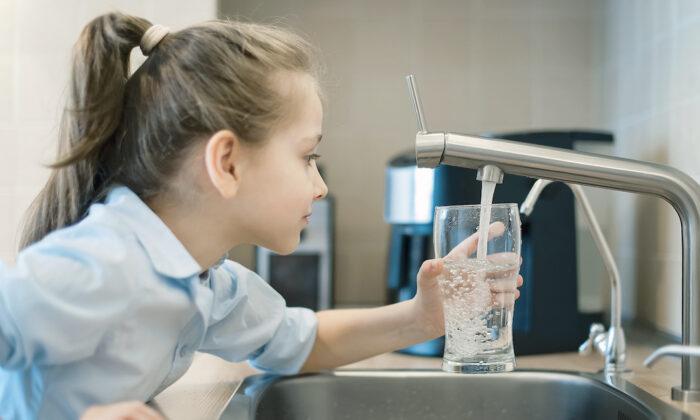
It still takes high dosage not made available normally. Certainly care is indicated. Otherwise it is generally safe enough because the damage arises at the higher dosage level.
The actual benefits still remain welcome. And a gel trip at the dentist still hardens weakened enamal.
I grew up on good well water in a floride deficient farm land. A gel treatment in my early thirties completely altered the prognosis for my own teeth. however i went years before a repeat. It was not necesary. I still have the early damage to work around but it remains stable in my seventies.
So pay attention once at least.
Higher Fluoride Levels Linked to Lower IQ Scores in Children, New Review Finds
New research has identified 1.5 milligrams of fluoride per liter as a key threshold for child development safety concerns.
1/7/2025Updated:1/9/2025
https://www.theepochtimes.com/health/higher-fluoride-levels-linked-to-lower-iq-scores-in-children-5787181?
A new review conducted by the National Institutes of Health (NIH) may have confirmed that higher levels of fluoride in drinking water lead to lower IQ scores in children.
The analysis, published in JAMA Pediatrics on Jan. 6, found that fluoride exposure exceeding 1.5 milligrams per liter (mg/L) was associated with reduced intelligence in children. The studies reviewed in the analysis measured fluoride levels in both drinking water and urine, with urinary fluoride serving as a proxy for total fluoride exposure.
Among the 74 reviewed studies, 64 found that higher levels of fluoride exposure were linked to lower IQ scores in children. The strength of this association is considered moderate to large.
Thirty-one studies reviewed noticed a dose-response, such that increased fluoride levels in drinking water were linked to further decreases in children’s IQ results.
However, the relationship between fluoride and lower IQ scores only persisted when fluoride concentrations in drinking water were above 1.5 mg/L, higher than the current fluoride drinking water standard of 0.7 mg/L.
The 1.5 mg/L cutoff is the same concentration identified a National Toxicology Program (NTP) report released in August. That report was cited more than 120 times in a lawsuit that led the court to rule that the Environmental Protection Agency (EPA) must revise its current drinking water standard of 0.7 mg/L.
When evaluating urinary fluoride, the researchers found that every increase of 1 mg/L in urinary fluoride was associated with an average decrease of between 1.14 and 1.63 IQ points.
Fluoride can cross the blood-brain barrier and accumulate in areas of the brain responsible for cognition and memory, although its effects on the brain remain unclear.
The study’s findings inform future risk-benefit assessments related to fluoride exposure, the authors wrote, especially highlighting the significant contributions of water and drinks made with fluoridated water, such as soft drinks, fruit juice, beer, and some bottled water, to total fluoride ingestion.
In the United States, it is estimated that approximately 40 percent to 70 percent of fluoride intake originates from fluoridated drinking water.
The World Health Organization has established the safe upper intake level of fluoride in drinking water to be 1.5 mg/L, and the U.S. Public Health Service recommends a fluoride concentration of 0.7 mg/L of drinking water. However, “fluoride levels above 1.5 mg/L are found in wells and community water systems that serve nearly 3 million people in the United States,” Christine Bruske Flowers, director of communications at the National Institutes of Health, told The Epoch Times.
In a September federal court case in California, environmental nonprofit Food & Water Watch sued the EPA, arguing that adding fluoride to drinking water is harmful. The judge ruled in favor of Food & Water Watch, finding that the current level of fluoride in drinking water (0.7 mg/L) poses an “unreasonable risk” to children’s IQs.
The ruling was based upon the NTP’s report, which found that fluoride concentrations close to the EPA’s current standard posed a risk to neurodevelopment.
The EPA is now required to take action to address this risk, which could lead to significant changes in how we treat drinking water.
Experts in DisagreementDespite the review’s findings, experts remain at odds about the meaning of the results.
Studies that have suggested a link between childhood fluoride exposure and reduced IQ scores “have had their limitations,” Suparna Mahalaha, an assistant professor at Case Western Reserve University School of Dental Medicine who was not associated with the study, told The Epoch Times.
In an editorial published along with the new study, Dr. Steven M. Levy, a dentist not involved in the study, pointed out that there is “no evidence” of an adverse effect at the lower fluoride levels commonly used in community water fluoridation systems.
One example he cited in opposition to the NTP’s study was the researchers’ use of urinary fluoride as a way to measure long-term fluoride exposure, stating that such measures are invalid because “fluoride has a short half-life and there is substantial variation within days and from day to day.”
Flowers emphasized the importance of fluoridated water and its use for decades to reduce dental cavities and improve general oral health.
However, the increased modes of fluoride exposure can also put pregnant women and children at risk.
Fluoride intake through toothpaste, mouthwashes, and food and drinks made with fluoridated water may increase children and pregnant women’s total fluoride exposure “and may affect fetal, infant, and child neurodevelopment,” Flowers said.
Mahalaha noted that the concentration of fluoride in drinking water is much less than what is added to toothpaste and mouth rinses, which is why it’s essential to ensure children do not swallow these products.
Toothpaste tubes carry warnings against ingestion because excessive fluoride intake can be harmful.
“When applying toothpaste to a child’s toothbrush, less than a pea size amount is sufficient and safe,” she said.
“From a public health perspective, in my opinion, high doses of ingested fluoride, and other things like sugar, processed foods, social media, and screen time all negatively affect the development of a child.”
No comments:
Post a Comment